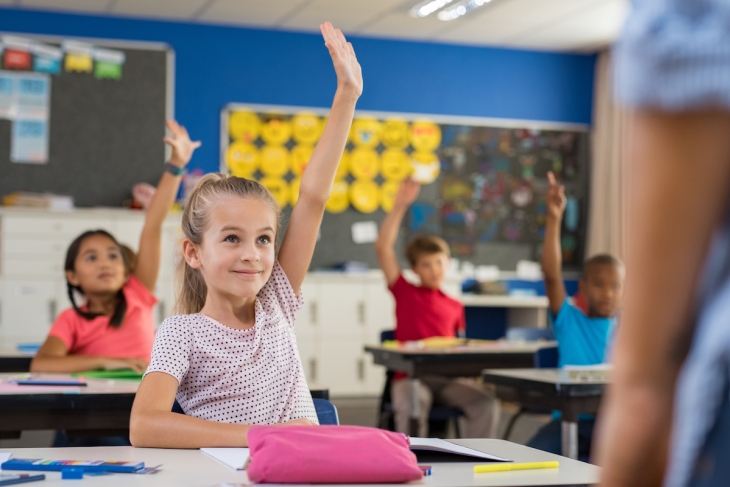Many futuristic reformers love to hate the classroom. According to the haters, we need to reimagine education itself, reconsider the “one teacher, one classroom” model, and do away with the traditional grammar of schooling. Center on individual students! Tear down walls! Let new models arise and lead us into a brave new world.
Most people intuitively understand the efficacy of the traditional classroom model—it’s still the modus operandi of America education, after all—but when utopian reformers treat traditional education like a punching bag, it’s important to stand up and defend the institution from time to time. Who will make the positive case for it when it’s so common to criticize it?
I hate to break it to these reformers, but the classroom really is a pretty efficient means to universally educate a populace. Like Churchill’s views on democracy, they are the worst method of mass education—except for all of the others, of course. There are identifiable strengths of the traditional classroom, and comparing them to three alternatives—tutoring, open classrooms, and remote learning—will help to tease them out.
Arguably, the best means to educate a child is one-to-one tutoring. It’s a truth so universally acknowledged that there’s even a name for it: the two-sigma problem. Children who are individually tutored perform two standard deviations better than traditionally schooled students—a near-unheard-of effect size in education. Yet tutoring comes with two problems.
First, the actual efficacy of high-dosage tutoring has come into question since Benjamin Bloom first coined the “two-sigma problem.” Research since Bloom’s seminal paper places the real effect size of tutoring closer to 0.5–0.8 standard deviations—still large, but not quite the utopian level initially reported. Moreover, one wonders how universal implementation would affect its impact after local districts cobble together programs, volunteers with little experience fill positions, and huckster organizations make big promises with few results.
Second, basic economics precludes us from universal tutoring. There are not and will not ever be the manpower or resources required to individually tutor our nation’s 55 million students. While the recent boost in home- and micro-schooling provides smaller classrooms to more students, the extra work, risk, and maybe cost that it creates for parents will keep it a niche phenomenon.
Thus, learning will remain a communal activity, and so the question becomes “what’s our next best option”?
In the 1970s, the open classroom was all the rage. Built on the idea that students learn best through doing, not instruction, open classrooms tore down walls, did away with schedules and isolated subjects, and established learning stations where students could encounter material and sequence their own educational journey. A room might have 100 students with several different teachers. Within a decade, however, this practice fell out of favor and institutions rebuilt their walls.
I like to imagine what an administrator at one of the schools might be thinking as they reconstruct the traditional schooling model:
It turns out that, to learn math, history, literature, or science, it helps to have roughly thirty to sixty minutes of direct guidance from a content expert, so let’s establish content-specific learning stations. It’s best if everyone transitions simultaneously, so perhaps an audio cue with a few minutes break between. And 100 kids are noisy, so let’s separate everyone out and set up some walls.
From isolated subjects to bells and square classrooms, there’s a reason for everything, even if it’s not immediately visible. In fact, the traditional classroom reminds me of Chesterton’s fence—a thought experiment wherein philosopher G.K. Chesterton suggests a new property owner shouldn’t tear down a fence until they understand why it was built in the first place. Remove it without such understanding, and you may find coyotes in your yard and snowdrifts blocking windows. Remove the bell, and hallways turn to chaos.
The research base on open classrooms is sparse. One meta-analysis found only twenty-one studies on it, and the results are mixed. Judging from what we know about other education research—the efficacy of explicit instruction, the need for worked examples and regular low-stakes quizzing, the importance of quiet and well-ordered learning environments, and the continual failure of discovery education every time it crops up—I highly doubt that further research would vindicate the model. In fact, those distinct strategies would flourish best in traditional classrooms.
Nonetheless, the false ideal of open classrooms reemerges every few years and fades away again as teachers build makeshift walls using whiteboards and shelves.
As one last comparison, consider the society-wide experiment we ran with online school during the pandemic. It was an unmitigated catastrophe. Students benefit from personal encounters with their teachers and peers; they flourish in the boundaries and structure of school; many rely on the bare necessities that these institutions provide. For a year and a half, we tore down Chesterton’s fence and discovered that traditional schools and classrooms with teachers in them offer kids a lot of the things they need.
Perhaps the most common criticism of the classroom denigrates it as a “factory model.” Its aisles, bell schedules, routines, hallways, and batches of children arose during the industrial revolution as a means to train good workers. So some think. But Shakespeare in his grammar school and Loyola’s Jesuits would contest that point of historical fact.
Still, assume for a moment that it was accurate. So what? We use factories because they are efficient tools to produce a high volume of product consistently—in this case, basic literacy, numeracy, and historical and scientific knowledge. Castigating schools as learning factories is not the insult that some people think it is.
Ultimately, I think the best way to understand the classroom frames it as an updated tradition. What is more basic to human society than an adult teaching a group of children about something important? The classroom might more relate to a family dinner; old doesn’t mean bad, and if we try to innovate past it, we may only discover that we’ve lost something essential.


